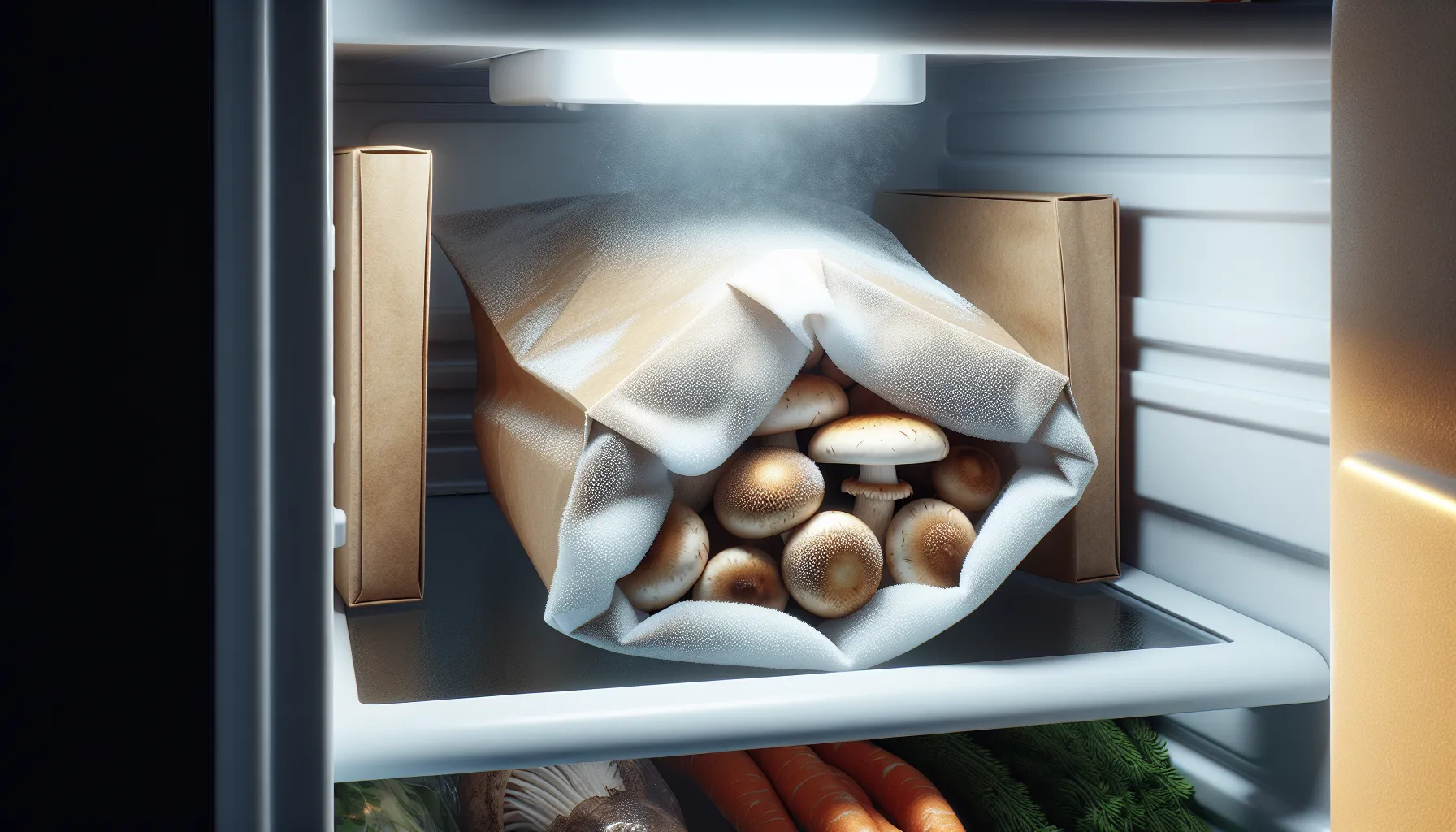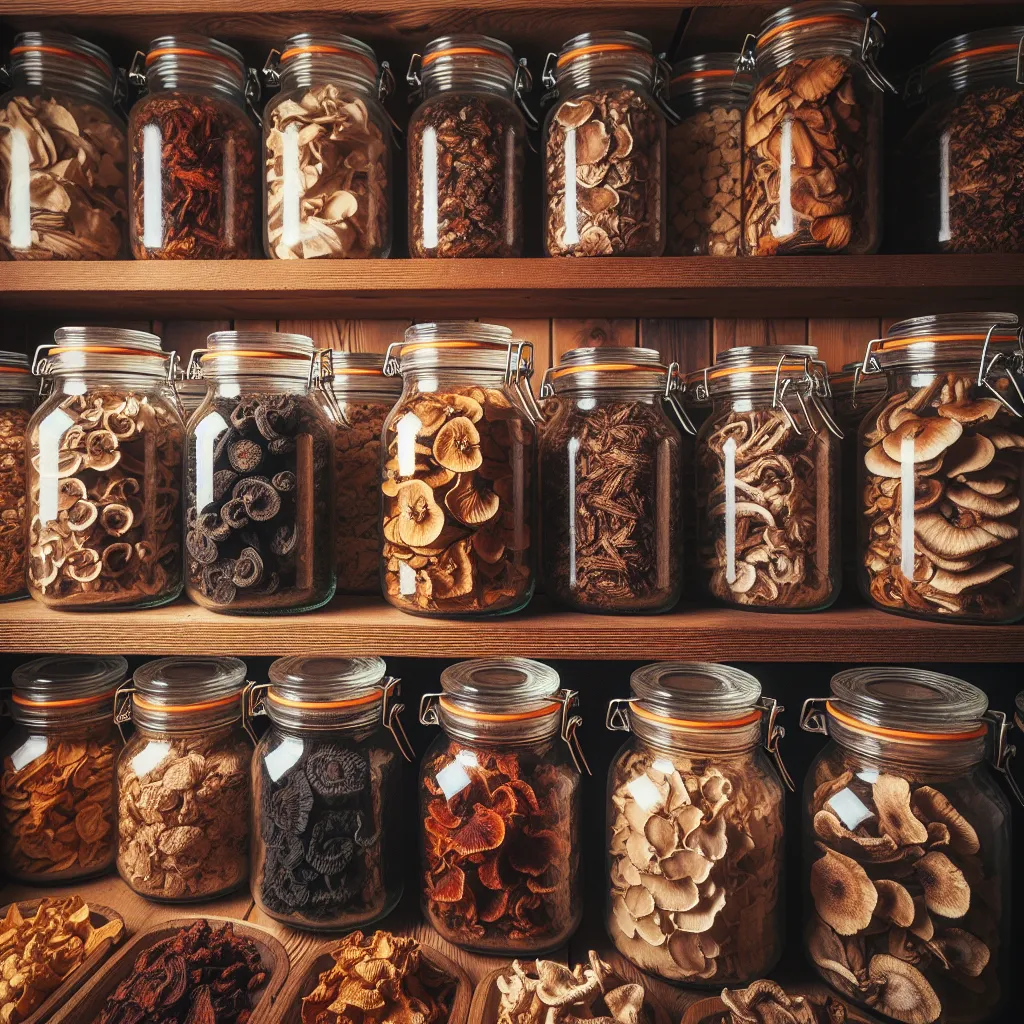Mushrooms are a versatile and nutritious addition to any meal, offering unique flavors and a host of health benefits. However, their shelf life is notoriously short, and many of us end up throwing out a lot of mushrooms because they spoil before we get around to eating them. Whether you’re a forager, a home gardener, or simply a mushroom enthusiast, learning how to preserve your mushroom harvest can enhance its longevity and allow you to enjoy your bounty for months, or even years, to come. In this article, we’ll explore various techniques for preserving mushrooms, ensuring that you can savor their taste and nutritional value well beyond their typical lifespan.
Fresh Storage
The journey to mushroom preservation begins the moment you harvest or purchase them. Fresh mushrooms should be stored in the refrigerator in a breathable container, such as a paper bag. Avoid airtight plastic bags, as they trap moisture and accelerate spoilage. This method can keep mushrooms fresh for about a week.

Drying
Drying is one of the oldest and most effective methods of preserving mushrooms. It works by removing moisture, which is crucial because moisture leads to decay. There are several ways to dry mushrooms:
- Air Drying: This is a natural method suitable for areas with a warm, dry climate. Simply string mushrooms on a thread and hang them in a well-ventilated area away from direct sunlight.
- Oven Drying: Preheat your oven to the lowest setting, spread your mushrooms on a baking sheet, and leave the oven door slightly ajar to allow moisture to escape. This can take several hours, so patience is key.
- Dehydrator: A food dehydrator is perhaps the most efficient tool for drying mushrooms. It allows for precise temperature control and can dry large batches evenly.
Once dried, mushrooms should be stored in an airtight container in a cool, dark place. Properly dried mushrooms can last for a year or more.

Drying not only prolongs the shelf life but can also concentrate the flavors. For detailed guidance on drying mushrooms, Practical Self Reliance offers a comprehensive guide.
Practical Self Reliance – How to Dry Mushrooms
Freezing
Freezing mushrooms is another effective preservation method. There are two primary ways to freeze mushrooms:
- Flash Freezing: Spread cleaned, sliced mushrooms on a baking sheet and freeze until solid. Then, transfer to a freezer bag, removing as much air as possible.
- Blanching and Freezing: Blanching involves boiling mushrooms for a couple of minutes, then plunging them into ice water to stop the cooking process. After drying, mushrooms can be flash-frozen as above.
The texture of mushrooms can change after freezing, so this method is ideal for mushrooms that will be cooked in the future.
For a deeper dive into the process, The Mushroom Forager provides an excellent resource.
The Mushroom Forager – Freezing Wild Mushrooms
Pickling
Pickling mushrooms is a creative way to preserve them while infusing them with flavors. The process typically involves immersing mushrooms in a brine made from vinegar, water, salt, and various seasonings, then canning them in sterilized jars.
Pickled mushrooms are great as an appetizer, a snack, or an addition to salads. For unique pickling recipes, visit Hunter Angler Gardener Cook.
Hunter Angler Gardener Cook – Pickled Mushrooms
Making Mushroom Powder
Mushroom powder is a fantastic way to preserve mushrooms and can be used as a seasoning to add a umami flavor to dishes. To make mushroom powder, dry your mushrooms completely using any of the drying methods above, then grind them into a fine powder using a coffee grinder or food processor.
Mushroom powder can be stored in an airtight container for several months and used in soups, stews, rubs, and more.
For the intricacies of making and using mushroom powder, Grow Forage Cook Ferment has valuable insights.
Grow Forage Cook Ferment – Mushroom Powder
Conclusion
Preserving mushrooms is not only practical but can also be a delightful culinary exploration. By employing techniques such as drying, freezing, pickling, and creating mushroom powder, you can extend the life of your harvest and enjoy mushrooms in a variety of ways throughout the year.
Each method has its own set of advantages, from the concentrated flavor of dried mushrooms to the unique taste profile of pickled varieties. Freezing offers convenience, while mushroom powder delivers potent flavor with a sprinkle. Experiment with these techniques to find out which best suits your lifestyle and taste preferences.
Remember to always start with the freshest mushrooms possible, as the quality of your preserved products directly relates to the quality of the fresh mushrooms. With these preservation methods, you can transform your mushroom harvest into a long-lasting, delicious supply that will serve you well beyond the season.
